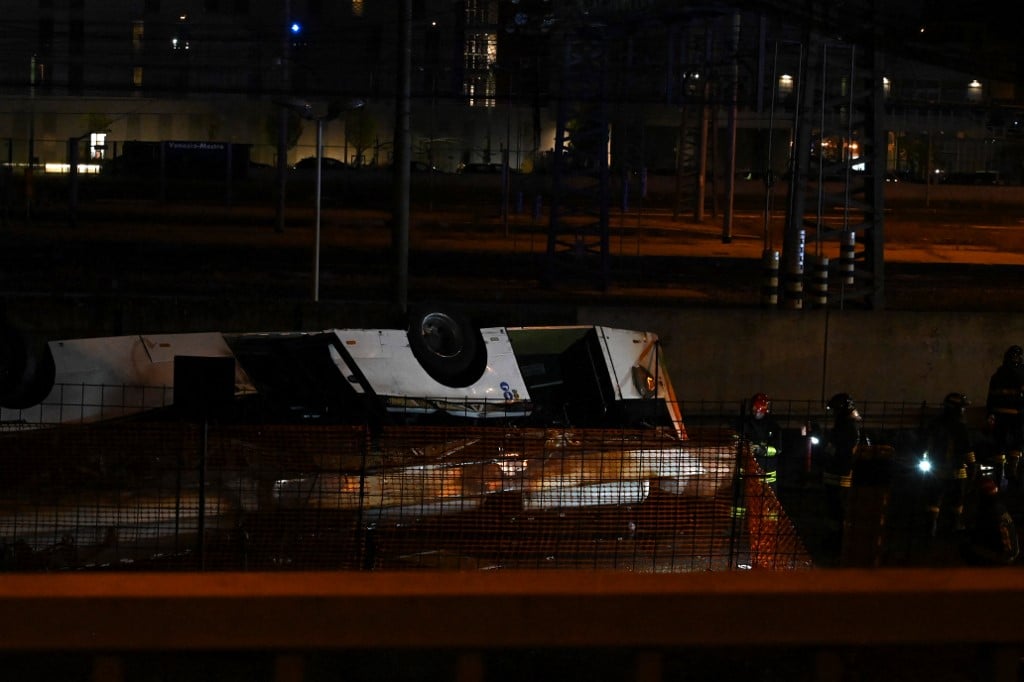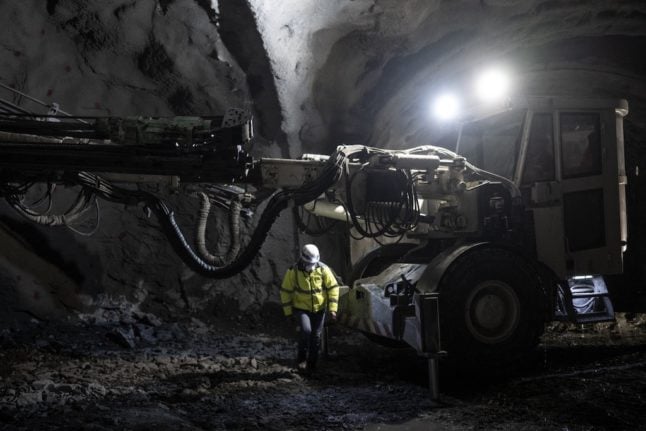“The bus flipped upside down. The impact was terrible because it fell from over 10 metres,” Mauro Luongo, fire brigade commander of Venice, told reporters at the scene.
The methane-powered bus was returning from Venice’s historic centre to a campsite when the accident occurred around 7.30pm.
READ ALSO: What do we know so far about the deadly Venice bus crash?
“A tragedy has struck our community this evening”, mayor Luigi Brugnaro wrote on Facebook, describing the site of the crash as “an apocalyptic scene”.
“The provisional toll is at least 21 fatalities and over 20 people hospitalised,” said Luca Zaia, the governor of the Veneto region, deploring a “tragedy of enormous proportions”.
“Efforts are on to extract and identify the bodies,” he said. “The victims and the wounded include people of several nationalities, not just Italians”
Firefighters said the bus caught fire and careered off the Rizzardi flyover, a road straddling a railway line and linking the Mestre and Marghera districts of the northern Italian city.
A city hall official said the dead included Ukrainian tourists while Italian news agency ANSA said the fatalities included German and French citizens.

Italian Prime Minister Giorgia Meloni expressed her “profound condolences”.
“I am in contact with mayor Luigi Brugnaro and (Transport Minister) Matteo Salvini in order to follow the news of this tragedy,” she said in a statement.
Salvini said the cause of the accident could be the driver suddenly taking sick or becoming unwell.
According to Corriere della Sera, the bus swerved off the bridge after smashing through the barrier and fell near railway tracks about 30 metres (100 feet) below.
The newspaper said the bus caught fire after hitting some power lines and “crumpled in on itself” in the blaze.
Interior Minister Matteo Piantedosi said, “The aggravating factor was methane and the fire thus spread rapidly”.
“I fear that the death toll will rise,” he added.
Francesso Moraglia, the Patriarch of Venice, was at the site where he blessed the corpses — covered with white shrouds on which bouquets of red flowers had been placed.
French President Emmanuel Macron and European Union chief Ursula von der Leyen offered their condolences.
German Foreign Minister Annalena Baerbock said she was “deeply saddened by the terrible bus tragedy… In this night of grief, my thoughts are with the victims, their families and friends”.
Meanwhile, a spokesperson for the German foreign affairs department told AFP its embassy in Rome was working with Italian authorities to verify whether German nationals were among the victims.
In July 2018, a bus carrying a group of some 50 holidaymakers back to Naples fell off a viaduct near the city killing 40 people in all.





 Please whitelist us to continue reading.
Please whitelist us to continue reading.
Member comments